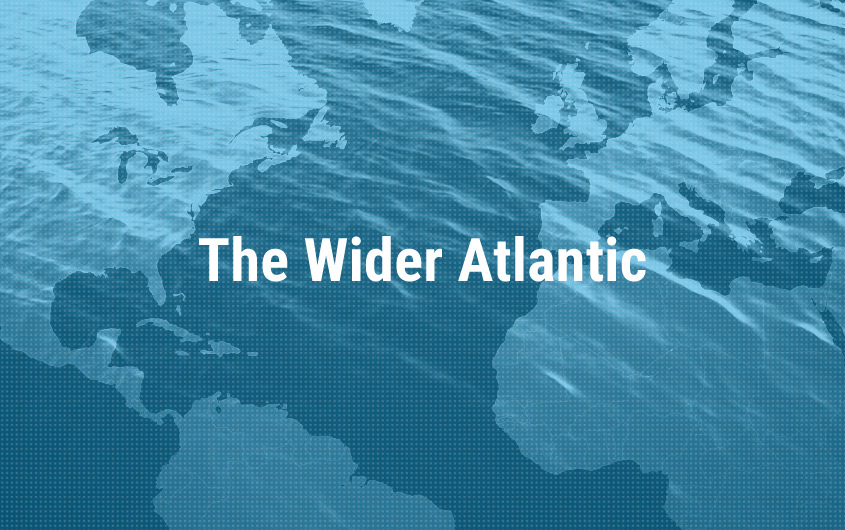
Will Globalization’s Third Phase Be Like Its First?

Peter S. Rashish
Vice President; Director, Geoeconomics Program
Peter S. Rashish, who counts over 30 years of experience counseling corporations, think tanks, foundations, and international organizations on transatlantic trade and economic strategy, is Vice President and Director of the Geoeconomics Program at AICGS. He also writes The Wider Atlantic blog.
Mr. Rashish has served as Vice President for Europe and Eurasia at the U.S. Chamber of Commerce, where he spearheaded the Chamber’s advocacy ahead of the launch of the Transatlantic Trade and Investment Partnership. Previously, Mr. Rashish was a Senior Advisor for Europe at McLarty Associates, Executive Vice President of the European Institute, and a staff member and consultant at the International Energy Agency, the World Bank, UN Trade and Development, the Atlantic Council, the Bertelsmann Foundation, and the German Marshall Fund.
Mr. Rashish has testified before the House Financial Services Subcommittee on International Monetary Policy and Trade and the House Foreign Affairs Subcommittee on Europe and Eurasia and has advised three U.S. presidential campaigns. He has been a featured speaker at the Munich Security Conference, the Aspen Ideas Festival, and the European Forum Alpbach and is a member of the Board of Directors of the Jean Monnet Institute in Paris and a Senior Advisor to the European Policy Centre in Brussels. His commentaries have been published in The New York Times, the Financial Times, The Wall Street Journal, Foreign Policy, and The National Interest, and he has appeared on PBS, CNBC, CNN, NPR, and the BBC.
He earned a BA from Harvard College and an MPhil in international relations from Oxford University. He speaks French, German, Italian, and Spanish.
During the world’s first phase of globalization before World War I, I had a great-grandfather who was a cigarette manufacturer in Czarist Russia. He traveled regularly to Turkey to purchase tobacco leaf, eventually moved with his family to London, spent a year in Bern, Switzerland, for both health and business reasons, and finally lived for a brief while in Berlin before setting sail from Bremen for the U.S., where he settled in Boston. At a time when both long-distance telephony and the automobile were still luxuries, and an age of commercial air travel would have seemed far-fetched, he managed to live, travel, or do business in at least six countries separated by considerable distances of both land and sea.
All of this also took place when, yes, there were efforts at tariff reduction among certain countries, and Treaties of Friendship, Commerce, and Navigation did in some cases provide basic rights and freedoms to citizens doing business abroad. But the kind of international trading system that we have today—one that is the guarantor of openness, order, and fairness through universally recognized and legally enforceable rules—was absent.
The first phase of globalization came to a halt with the disruptions to commerce caused by World War I. But even without the war, it would have ended with the protectionism of the 1930s, of which the infamous Smoot-Hawley tariffs in the U.S. were emblematic.
Fast forward to 1947, when the U.S. and 22 other countries signed the General Agreement on Tariffs and Trade (GATT), and which Germany acceded to in 1951. This act launched the second, rules-based period of globalization when successive agreements expanded trade through tariff cuts and created rules defining what it meant to trade fairly. This process jumped to the next level in 1995, when the GATT became the World Trade Organization (WTO), which acquired the ability to adjudicate disputes among its members, putting the concept of fairness front and center.
Thanks to this organized, rules-based second phase of globalization, sometime in the 1990s the global economy became as integrated again as it was in the pre-World War I period.
But there is yet another, third phase of globalization that may be emerging—one driven by technology rather than by economic rules. Because of the difficulty of finding consensus among 164 diverse economies, the WTO has created only scant new rules since its founding over 20 years ago. Nonetheless, through technological advances the digital economy is taking off fast, driving strong growth in the trade of both digital and traditional goods through e-commerce and enabling new manufacturing and services platforms through the Internet of Things.
Could a third phase of technologically-based globalization thrive without robust rules to govern the way companies interact across digital platforms, replicating the successes of the first phase of globalization? Is the second, rules-based phase of globalization destined to be history’s exception?
The jury is still out. But without strong rules to govern the global digital economy of the future, what’s to prevent another self-defeating spasm of 1930s-style protectionism from tearing apart this rapidly growing, intricate web of commercial relationships?
A number of rendezvous over the coming months—the G20 summit in Hamburg in July, the launch of the NAFTA renegotiations later this year, the WTO ministerial meeting in Buenos Aires in December—will help provide an answer.








